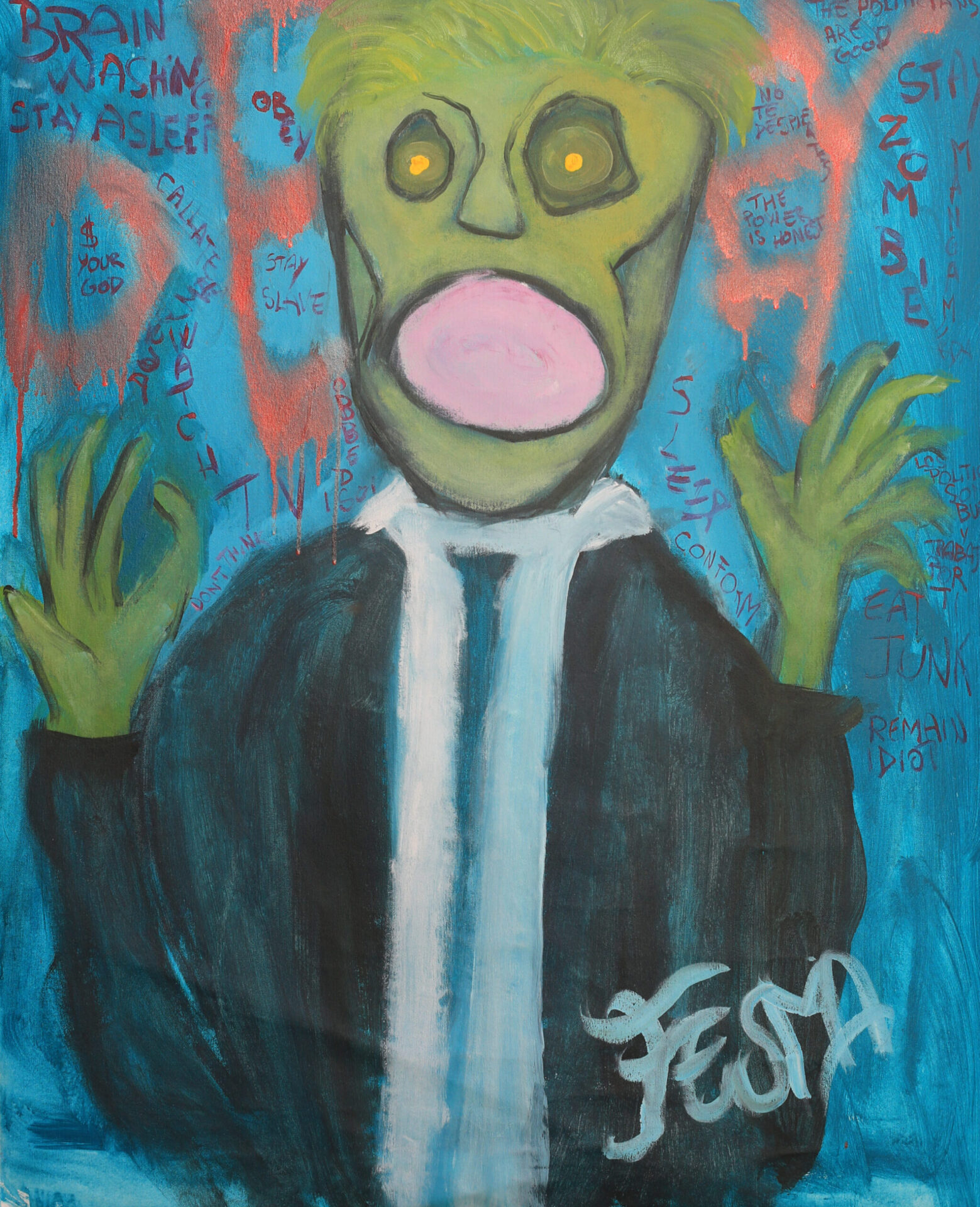This exhibition presents a series of acrylic and spray paint works where the artist abandons classical conventions to explore a unique visual language. Guided by research and experimentation, Fesma brings to life a creative process that challenges established norms.
Drawing inspiration from figures like Basquiat, German Expressionism, and Pop Art, Fesma combines saturated colors, extreme contrasts, and bold symbolism to address contemporary societal issues. His critical and provocative approach not only questions political correctness but also invites viewers to reflect from uncomfortable and disruptive perspectives.
The collection features angels, demons, figures of power, and even unexpected elements like potatoes – all woven together into a deeply personal visual lexicon. Each work serves as a portal to the human psyche, eliciting emotions ranging from unease to curiosity to unexpected humor.
The result is an artistic experience that defies expectations and leaves an indelible mark on those courageous enough to engage with its content.

43×32 cm
acrylic on canvas
2022

65×45 cm
Acrylic on canvas
2022

61×42 cm
acrylic on canvas
2022

61×42 cm
acrylic on canvas
2022

61×42 cm
acrylic and spray on canvas
2023

100×80 cm
Spray and acrylic on canvas
2023

100×80 cm
Acylic and spray on canvas
2023

100×80 cm
Acylic on canvas
2023

100×80 cm
Acylic and spray on canvas
2023

300×200 cm
Acrylic on canvas
2022

100×80 cm
Acrylic and spray on canvas
2023

100×100 cm
Acylic on canvas
2023

150×105 cm
Acylic on canvas
2022

200×200 cm
Acylic and spray on canvas
2023

98×80 cm
Acylic on canvas
2022

90×62 cm
Acylic on canvas
2022

62×42 cm
Acylic and spray on canvas
2023

42×35 cm
Acylic on canvas
2023

43×27 cm
Acylic on canvas
2023

61×42 cm
Acylic and spray on canvas
2022

43×27 cm
Acylicon on canvas
2023

61×42 cm
Acylic and spray on canvas
2023

27×43 cm
Acylic on canvas
2023

51×51 cm
Acylic and spray on canvas
2023

230×200 cm
Acylic on canvas
2022

120×80 cm
Acylic and spray on canvas
2023

61×42 cm
Acylic and spray on canvas
2022

80x50cm
Acylic and spray on canvas
2023

150×105 cm
Acylic on canvas
2022

198×68 cm
Acylic on canvas
2022

41×41 cm
Acylic and spray on canvas
2023

